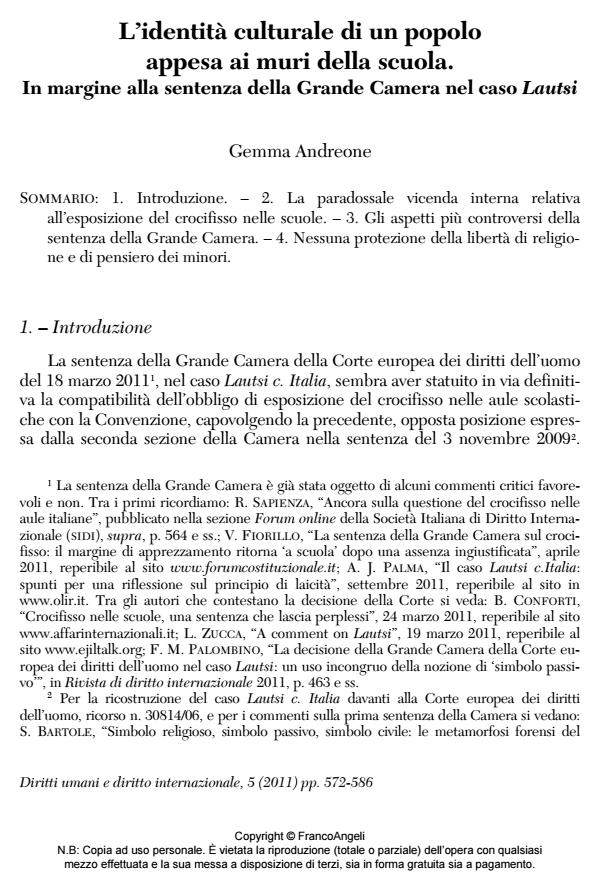Cultural identity of Italian people affixed to the walls in the State-school classrooms. Comment on the Grand Chamber judgment in Lautsi case
Journal title DIRITTI UMANI E DIRITTO INTERNAZIONALE
Author/s Gemma Andreone
Publishing Year 2011 Issue 2011/3
Language Italian Pages 15 P. 572-586 File size 193 KB
DOI 10.3280/DUDI2011-003007
DOI is like a bar code for intellectual property: to have more infomation
click here
Below, you can see the article first page
If you want to buy this article in PDF format, you can do it, following the instructions to buy download credits

FrancoAngeli is member of Publishers International Linking Association, Inc (PILA), a not-for-profit association which run the CrossRef service enabling links to and from online scholarly content.
The ECHR Grand Chamber judgment reversed the decision of the second section of the Chamber, establishing that no violation of Article 2 of Protocol no.1, as interpreted in the light of Article 9 of the Convention, had been committed by Italy. According to the Court, the compulsory display of the crucifix in Italian State-school classrooms must not be considered as a form of State indoctrination towards pupils and, as a consequence, it does not restrict the right of parents to educate their children in conformity with their convictions. Nevertheless, the Court limits the analysis to the compatibility of this behaviour on the part of the State with the freedom of parents to educate their children, without taking into consideration the direct infringement of the right of schoolchildren to believe or not believe, enshrined in Article 9 of the Convention.
Gemma Andreone, L’identità culturale di un popolo appesa ai muri della scuola. In margine alla sentenza della Grande Camera nel caso<i>Lautsi</i> in "DIRITTI UMANI E DIRITTO INTERNAZIONALE" 3/2011, pp 572-586, DOI: 10.3280/DUDI2011-003007